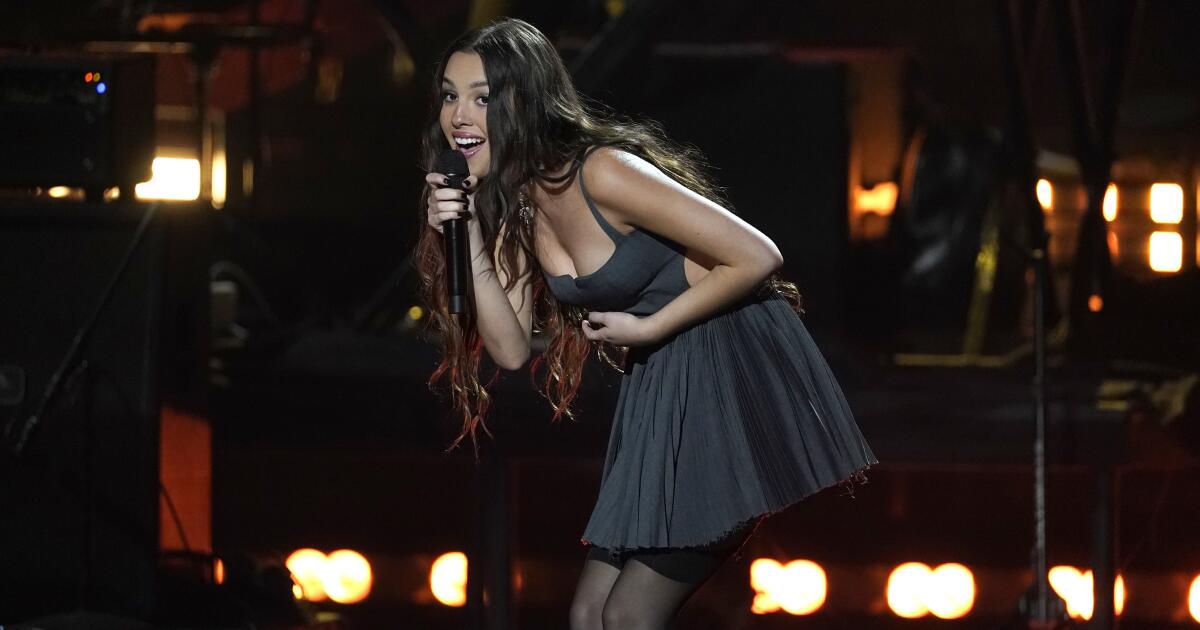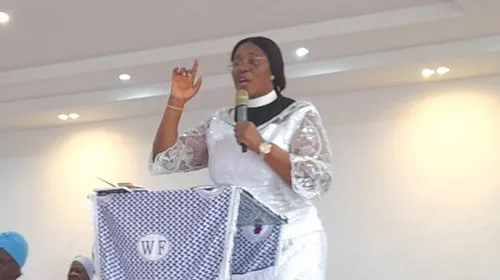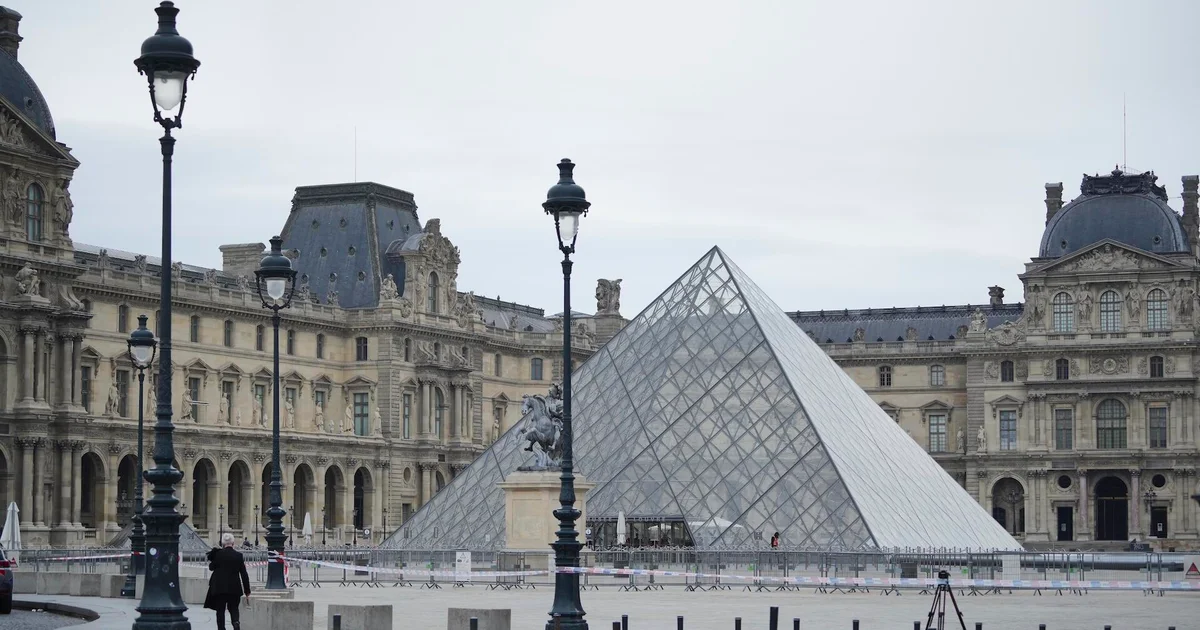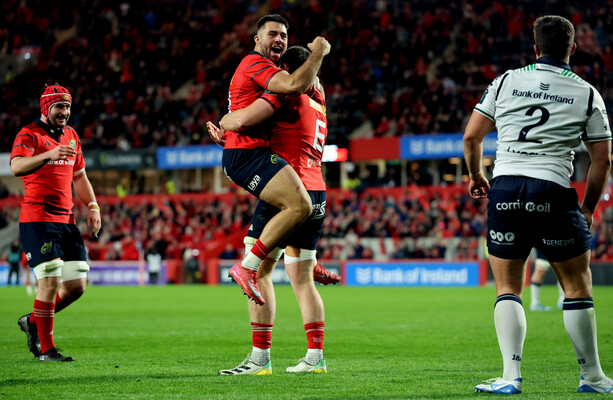Copyright Los Angeles Times

A cross-section of music superstars — Soundgarden, Outkast, Warren Zevon, the White Stripes, Cyndi Lauper, Chubby Checker, Joe Cocker, Salt-N-Pepa, Bad Company and industry icon Lenny Waronker — will be inducted Saturday into the Rock & Roll Hall of Fame in a ceremony to be held at L.A. Live’s Peacock Theater. A roster of music stars spanning generations will be on hand to celebrate the inductees. Among them: Olivia Rodrigo, Elton John, Janelle Monae, En Vogue, Beck, Doja Cat, Brandi Carlile, Flea, Joe Perry, Questlove, Teddy Swims, Bryan Adams, Avril Lavigne, Heart’s Nancy Wilson, Donald Glover, Jerry Cantrell, 21 Pilots and Raye. Comedy veterans David Letterman and Jim Carrey also will participate in the event. John Sykes, chairman of the Rock Hall, said, “Being inducted into the Rock & Roll Hall of Fame has become music’s highest honor.” “An induction into the Rock and Roll Hall of Fame is recognition that an artist has helped shape the sound of a generation. It means that their music has, in some way, defined culture,” said 21 Pilots’ Tyler Joseph. Vicky Cornell, widow of late Soundgarden singer Chris Cornell, said: “This recognition means so much as it not only celebrates the extraordinary body of work that Chris created with his band — songs born from his soul, his imagination, and relentless dedication; it honors Soundgarden’s profound effect on music that helped create a whole new genre — grunge — with the depth of Chris’ writing and his creative vision at its core. ... It reminds us that Chris’s spirit lives on — in every song, every lyric, and every soul his music continues to touch.” The Times spoke with Sykes, who made L.A. part of the induction calendar, along with New York and Cleveland, home of the actual Rock Hall building, when he replaced Jann Wenner in 2020. Sykes gave a preview of the night, which will include many surprises. How do you approach a ceremony in L.A., which obviously has such a distinct history versus the other places? Well, although the primary goal of the hall is to each year induct the most deserving candidates, we do look at where we’re going. And if one of the artists is from that area geographically, we try to shine a light on them. For example, Warren Zevon has been eligible for years and almost inducted. This year, he happened to get in. So, we’ve decided to celebrate that and really shine a light on him, not just because he deserves to be, but also, he was from L.A. So, I have something very special planned for him. Also, Lenny Waronker is deserving. He would have gotten in no matter what city he was in, but because it is in Los Angeles, it’s great that Lenny will be there. But, for the most part, we are focusing on the most deserving artists. And because we know it takes so long sometimes to be inducted, that’s our primary focus every year. You have Outkast, Warren Zevon, White Stripes and Cyndi Lauper, among others, all being inducted together. What I love about this class of inductees is that they really reflect the diversity of rock ‘n’ roll. They really reflect the sounds that really were influenced by the original creatives of rock ‘n’ roll from rhythm, blues, gospel, and country in the ‘50s, which has lived on through rock ‘n’ roll, through hip-hop, through various genres that have evolved, but they all have their roots that go back to rock ‘n’ roll. Then you get someone like Chubby Chucker, who was there at the beginning of rock ‘n’ roll. I was actually surprised that he, as a performer, hadn’t been inducted. One of our nominating committee members, Cliff Bernstein, really convinced the room that, although we celebrated the song in the past, “The Twist,” Chubby didn’t get his moment in the spotlight. And he did very well in the voting. Sometimes an artist can get in the first ballot. For others, it takes years. How did you choose L.A. as a regular market for the induction ceremony? When I took over the hall in 2020, I made a commitment that we would have more induction ceremonies in Los Angeles because so much of what we’ve seen in the history of rock ‘n’ roll music and its growth came from Los Angeles. It just seemed that for years, the Hall of Fame was a New York-based foundation with the museum in Cleveland when half, if not more, of the artists came from Los Angeles. So, it’s really why now every third year we’re in New York, Cleveland or Los Angeles. Los Angeles now is one of the cornerstones of the Rock and Roll Hall of Fame Foundation. I’m very proud of that. Similarly to the Grammys, which is largely seen by the general public as one huge night but works year-round, how do you raise the profile of the hall nationally year-round? We made a commitment to have a greater presence in Los Angeles in the last two years. We’ve celebrated some important documentaries, like “San Francisco Sound,” as part of our Rock & Roll Hall of Fame screening series, and more recently, Bruce Springsteen’s “Road Diaries” that came out last year on Hulu that we also celebrated in Los Angeles. So, we’re widening the aperture of the Hall of Fame from being just an induction ceremony once a year and really looking at how fans can connect with the hall and its inductees 365 days a year. Would there ever be plans to do traveling exhibits in L.A. or New York or other cities like Detroit? I think if you look at the country — Detroit, Chicago, Memphis, even the East and Lower East sides of New York and clearly San Francisco and Los Angeles — there are many touch points, many important cities in this country that have really contributed to the growth and the evolution of rock ‘n’ roll. And while we’ve looked at traveling museums, what really interests us most is looking at a virtual hall where fans anywhere in the country, or the world, can connect with the inductees, the performances and the legacy of rock ‘n’ roll music. That’s exactly what we’re doing now tied in with a platform. We’re building a virtual platform and obviously really stepping up our presence on social media to share these incredible artists and stories of rock ‘n’ roll. What’s the timeline for that? We’re in process of developing it all right now, and I think soon you’ll see, or in the coming years, you’ll see a Rock & Roll Hall of Fame documentary series. I think you’ll see a real stepped-up social presence, as I mentioned, and a virtual presence that will allow fans anywhere to connect with the hall. Part of our goal is to drive more people to Cleveland, to this beautiful museum. But if they can never make it there ... they can celebrate what’s in that museum and what we have in our archives anywhere in the world. What are your favorite items in the archives? What I’m very excited about currently in the Rock & Roll Hall of Fame is an incredible exhibit that we partnered with “Saturday Night Live” on celebrating the 50 years of music on “SNL.” Lorne Michaels came out to see the exhibit, Fred Armisen actually got up and played on the stage at the museum. It really celebrates between 1,500 and 2,000 performances on that show. It’s the only place right now where you can see every single musical performance ever on “SNL” on demand. It’s not available on television, on streaming anywhere. It’s only available at the Hall of Fame. We recently had an exhibit on “Get Back” with Peter Jackson for the Beatles, which was incredible. What I love, though, are some of the hidden gems we have in the archives. We basically have an interview series, oral sessions, with some of the greatest artists in rock ‘n’ roll telling the story of their lives. There are warehouses filled with incredible pieces that we can share with fans. It’s going to be part of them. Some of them now will be able to be seen live in this new expansion we have that will open in 2027 to our IMPA designed museum in Cleveland. This year we lost Brian Wilson, Ozzy Osbourne and Sly Stone, among others. Talk about the importance of the hall and sharing these artists and their legacy. Yeah, baseball has Cooperstown; football has Canton, Ohio. The NBA has Springfield, Mass., and for the last 40 years, music has had Cleveland. We have that museum, which is run by Greg Harris, our president. He takes very seriously how we celebrate these incredible artists and their contributions to not only music, but to politics and culture. There’s no one I’ve ever met who hasn’t come out of that museum completely blown away by the depth of content and music that we celebrate. I think that’s what you’ll see in this year’s induction ceremony, where we’re paying tribute to those great artists, like Sly [a.k.a. ] Sylvester Stewart, like Brian Wilson and others that we’ve lost, and Warren Zevon. You’ll see some incredible moments we’ve got ready to go. There are surprises, and you really won’t want to miss them. And some of the biggest names in music will be there, including Elton John. We’re going to have Chappell Roan, Doja Cat, some incredible young artists celebrating their heroes. ... So, you’ve seen Olivia Rodrigo singing “You’re So Vain,” Harry Styles getting up with Stevie Nicks singing “Gold Dust Woman.” When you look at a Rock & Roll Hall of Fame stage every year, there’s nothing like it. You see literally the biggest artists in the world today celebrating the heroes from 25 years ago or more. As much as you want the biggest names, they have to be a match, I assume. When you start to think about who can sing like Joe Cocker, that’s a limited list. Teddy Swims will be there singing for Joe Cocker. And he’s going to be backed up by the Tedeschi Trucks Band. They do Joe Cocker live on their shows. Because some of the artists have passed, you’ll see a young artist paying tribute to them. But even a Cyndi Lauper will have some very famous names sharing the stage with her. Jack White will be in the room. Whether he’ll be onstage, you’re going to have to find out. ... But I promise you, there are going to be some amazing artists celebrating the music of the White Stripes on that stage. For a band like Soundgarden, for example, do you make suggestions with them or do they totally pick who’s going to sing with them? We work hand in hand with the artists. Rick Krim, who also runs our nominating committee at the Hall of Fame, works very closely with the artists who help curate the show. So, it always starts out as a conversation. And the artists themselves have ideas. At the end of the day, it’s whoever they feel comfortable with celebrating their success, and we support that. I imagine as well it’s a heavy thing for the artists and families inducting people they have lost. It’s huge. And these artists and their families take it very seriously, as do we. We do everything possible to make it the greatest evening of their life. And it’s important, too, to recognize them as not only having an incredible career, but also what they’ve done to contribute to the growth and evolution of rock ‘n’ roll and its continued impact on culture, 70 years after it was basically invented in the ‘50s through the collision of rhythm, blues, gospel and country, which you can trace all the music today back to those very early days. Do you see a common thread between all these artists? The beauty of rock ‘n’ roll is that these artists don’t look alike. They don’t sound alike, but they have one thing in common — attitude. They’ve got attitude and they’ve moved generations. That’s the beauty of the induction ceremony. On one hand, you’re celebrating Cyndi Lauper from an album she put out in the ‘80s, and on the other you look at Outkast that changed the game for music in the late ‘90s. But they all exist together in a musical ecosystem that is rock ‘n’ roll. Then when you’re curating it, it becomes the biggest festival in the world. It is a lot of work, but at the end of the day, one of the greatest opportunities to be able to work with all these artists, some of the most important ones of our time, to bring them on one stage, on one night to celebrate their music and those around them. Our job really is to curate, help them plan, and then get out of the way.



